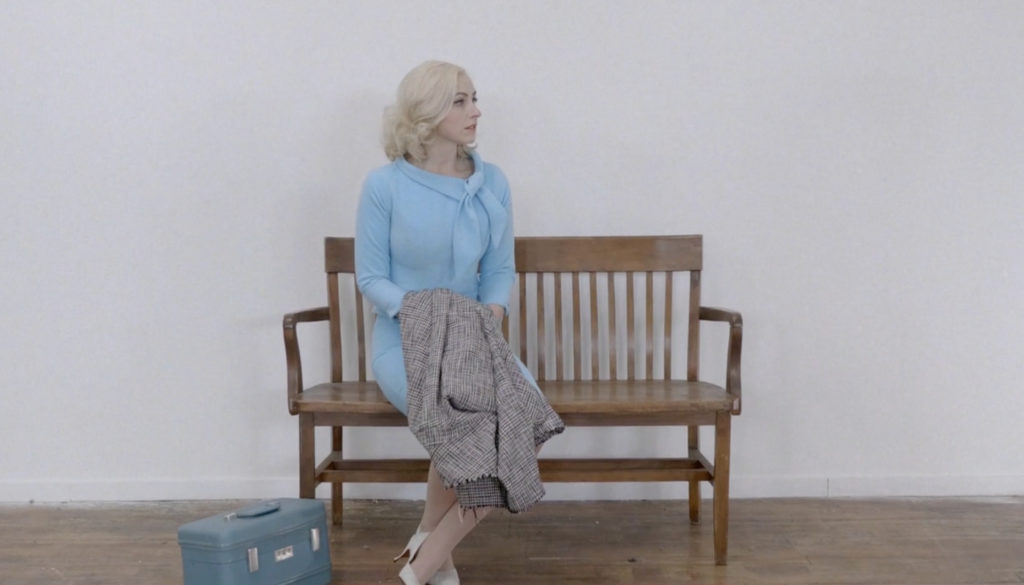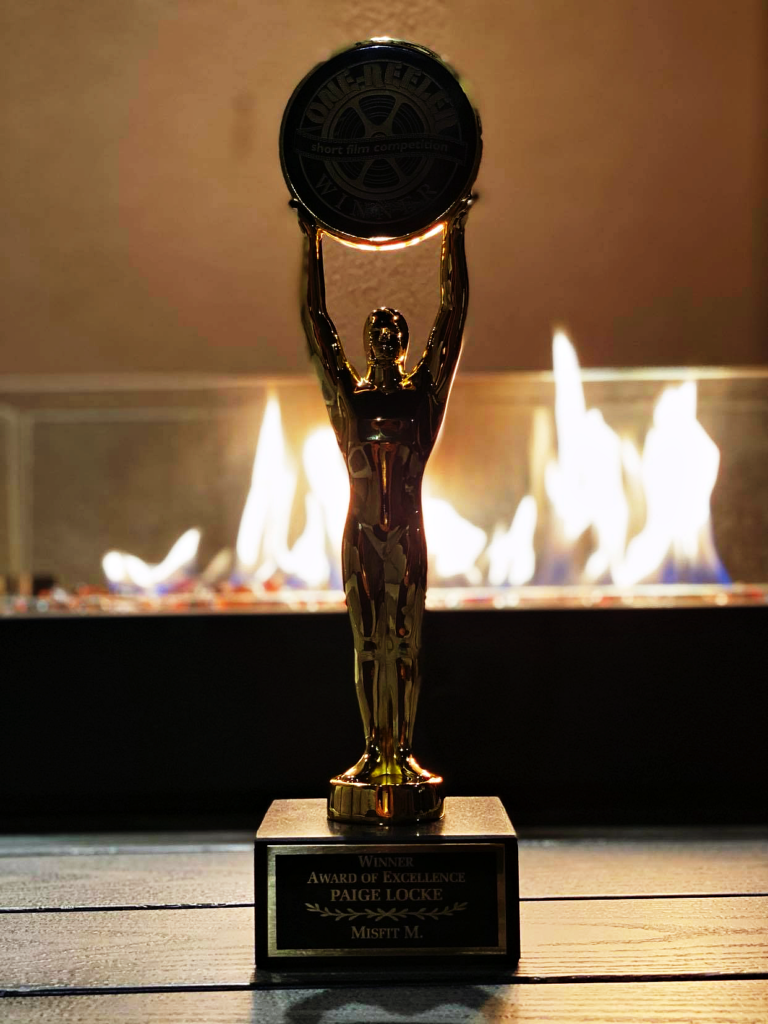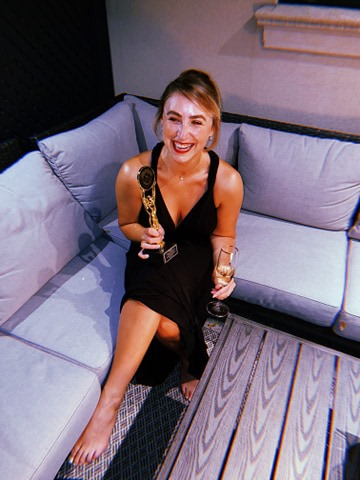Best Short Film Winners receive our stunning 11 1/2″ 24K custom gold statuette which is manufactured by R.S. Owens, the same company that manufactured the Oscar for 30 years! All Winners can purchase the award via our online Awards Order Form HERE.


Title: Misfit M.
Runtime: 12 min
Country: Canada
Director: Sarah Hempinstall & Austin Ball
Featuring: Paige Locke
Placement: Award of Excellence
Competition: June, 2020
Synopsis: Who can you trust when you’re the most famous woman in the world? The year is 1961. The woman is Marilyn Monroe. The words are her own.
‘Misfit M.’ documents four days in 1961 in which Marilyn Monroe was unknowingly admitted to the psychiatric ward of a New York clinic by her own female psychiatrist only managing to escape thanks to threats made by ex-husband Joe DiMaggio. Shortly thereafter while recovering in New York Hospital, Monroe wrote a letter. With 100% of the films screenplay taken directly from it, ‘Misfit M.’ sheds light on a chapter of Monroe’s life from a completely untampered point-of-view.
The film lives in a trance; a mirror of Monroe’s health at the time. At moments scattered, nostalgic and bitter, Marilyn’s words portray a woman who was incredibly misunderstood, lonely and abused but also incredibly smart, insightful, thoughtful and at times playful.
In addition to the never-ending intrigue of Miss Monroe, ‘Misfit M.’ is also a window into the abuse and mistreatment of both mental health and of power in a corrupt system.
Thanks to the cooperation of Julien’s Auctions in Los Angeles and the blessing of the current owner of Marilyn’s letter, this story has now been taken off the page.
OR: What was the inspiration for your film?
PL: Marilyn! ‘Misfit M.’ actually got its start as a one-woman show simply titled ‘Misfit’ that toured Ontario, CA for 2016-2017 appearing in the Fringe festival among others (I also starred as her then). I didn’t develop the show though, just auditioned for it. Canadian playwright Darren Stewart-Jones had come across this letter online that Marilyn Monroe had written in 1961 to her psychiatrist about these crazy four days. The one-woman show was the letter spoken start to finish like one big monologue (I still don’t know how I memorized it all verbatim). I got tired of doing the show after awhile but was also sad to leave her behind; audiences had really been moved by what she (Marilyn) had to say!
OR: When did you conceive the idea for your film and how long did it take before it was realized?
PL: Continuing on the same train of thought as the last question, I got to a point where I thought “hmm… I wonder if I could take this letter, cut out some of the fluff, re-arrange it to be pleasing as a screenplay, and adapt it for the screen???” Like most actors, I got to a point where I didn’t want to always be waiting on my agent to get me gigs so it seemed like a natural progression to go into producing. With the blessing of Stewart-Jones, I took the concept of his show and ran with it. After bringing on an amazing team, fellow producer Allie Dunbar and I tracked down the current owner of her letter via Julien’s Auctions in Los Angeles. The CEO was extremely helpful and enthusiastic about our project and confidentially contacted the highest bidder of the letter (they had a Marilyn auction a few years back), pitched him the film, and this mystery owner signed off officially giving us the rights to put “Written by Marilyn Monroe” in the credits. The whole process of realizing I wanted to adapt the letter to the screen to getting the rights took 3 months, November 2017-January 2018. We went to camera in April of 2018.
OR: What was the most challenging aspect of working in a short film format?
PL: Honestly, the letter was only long enough to make it a short film! If we had turned this into a feature we wouldn’t have had enough of her words to still say it was entirely written by her and that was the coolest bit. Sure, we had some challenges here and there, but everything really did go incredibly smoothly. I thank our DOP/co-director Austin Ball, co-director Sarah Hempinstall, production designer Angelica Stirpe, costume designer Julia Kim, HMUA Shawnna Downing, sound George Petrovic, on-set photographer Samantha Falco, and of course my savior, producer Allie Dunbar for keeping my head afloat. It’s a lot of work to make a period piece set in 1961 on a budget and to do it right! Okay, now that I’ve said it, that was the hardest part, staying in budget (we didn’t… it continued to grow and I continued to invest my own money… but hey, it’s getting seen!)
OR: What was the most challenging aspect of your production?
PL: By FAR the most challenging aspect of it all was in post-production. This is not a linear narrative. There isn’t one traditional scene with two actors speaking back and fourth. Austin Ball is also our editor. He went into day one of post-production with a letter to reference and 4+ hours of footage for one short film that we wanted to make sure wasn’t over 20 minutes. Can you imagine?! Where does one even begin? He could do whatever he wanted. It was like telling a story through an abstract painting. For this reason, our post-production timeline ended up doubling in length which wasn’t ideal and pushed our festival season back a year but man, every time I sat down with Austin and we figured something out that really worked well, it was so exciting.
OR: Do you have any advice for first-time filmmakers?
PL: If you’re at a point in your career where you feel well equipped, both physically and intellectually, to make a film… just go big. Don’t waste your time, effort and money. Do it right. Make something that will be seen by more people than your friends and family and hopefully move your career forward. If you have access to money, amazing. If not, you can make anything on a budget (I made a quarantine short in May of this year for $0 that has been accepted to 3 festivals: one in Canada, one in the US, and one in the UK). Just make sure your team is all seeing eye-to-eye. If everyone has the same vision then you don’t need a million bucks to bring your ideas to life. You’ll figure it out. With ‘Misfit M.’ we were all on the same page with how it would aesthetically look without even really having to talk about it. Everything came together so beautifully. It was like Austin and Sarah and Angelica and everyone else knew how to manifest my imagination.

